Features of color and shades
Wenge color it is almost impossible to find it in its natural form, because the natural African wood of the wenge tree (Millettia laurentii) is rare and very valuable. It is mined a little, therefore it is extremely expensive.
Modern manufacturers either imitate wenge with films, wood stains, waxes. Or they make furniture with wenge veneer, but products with such facades will cost more than analogues of other varieties.
Since most often we see wenge-colored furniture in a film, many believe that wenge is exclusively dark brown with frequent light veins. However, natural wood is more versatile: depending on the age of the tree and the part from which the saw cut was cut, the shade varies from light brown to chocolate (almost black). Sometimes it goes to a purple or burgundy undertone.
The subtones even have their own individual names:
- melinge - cold dark brown;
- tsavo - warm, medium saturation;
- aruba - dark with burgundy notes.
What colors are best to combine?
A wenge-colored kitchen is rarely monochromatic. Most often, dark wood is combined with other shades of wood:
- wenge cuisine and bleached oak (or milk) - the standard method, usually used in the form of "light top, dark bottom»;
- combining the lower facades for the wenge kitchen with imitation of walnut on the upper ones, you should carefully consider the shades: both trees are warm or cold, it is best to combine them at the same temperature;
- Combined headsets with shaman or sonoma oak provide a new interpretation of African wood.
In the photo, a combination of wood of medium and strong saturation
The second most commonly used option is combining dark wood with pure white. A kitchen set against white walls will never look too rude.
Advice! If you add to glossy white glass, metal parts - you get stylish high-tech interior.
Color duets of wenge with blue, green, orange, purple are becoming more and more popular: the more complex the tone, the more expensive the wenge-colored kitchen will look in the interior.
The classic kitchen design - the combination of wenge color with vanilla - has already outlived its usefulness. Therefore, it is better to leave the usual combination with beige in the past, choosing any other light shade for decoration.
Recommendations for the choice of finishes
Wenge kitchens are active on their own: so that dark cabinets do not look too bulky, they are placed on a light base.
Ideal if in the room white ceiling, white (beige, gray) walls, light (oak, alder, walnut) floor.
Advice! Light walls are easily soiled, so choose practical finishing materials: washable paint, tiles, panels.
In the photo there is a light finish of the kitchen-living room
If you wish, you can make the interior more active by making the walls colored - but this option is not suitable for small rooms.
Which countertop to choose?
Since wenge kitchen facades already have an overly saturated shade, it is better to choose a countertop light: it will add airiness and lightness to the overall look.
The wenge kitchen looks good with a beige panel, white, marbled variations. The modernized version is terrazzo.
Advice! Give up the texture of wood in favor of a monochromatic gloss or stone, wenge goes well with them.
In the photo is light artificial stone countertop
Which apron to choose?
Apron for kitchen wenge should combine aesthetics and practicality. If you look at real photos of completed projects, you will notice that the panels above the working area almost always tend to white or cream. On the one hand, the option is a win-win, on the other, boring and time-consuming.
Therefore, if you want something more original, choose a plain apron made of tempered glass. It is worth complementing this simple construction backlit and a luxurious accent in the interior is ready!
Suitable materials: tiles, porcelain stoneware, skinals, PVC panels (everywhere except for the area near the slab), natural or artificial stone, MDF panels (you can choose or order to match the countertop).
What curtains to choose?
The interior of the kitchen can exist without curtains - especially since the trends of recent years are actively calling for abandoning textiles on windows wherever possible. Open spaces are especially good in small spaces - they visually expand the premises, fill with air.
Another option for a kitchen without curtains is when the corner set is located under the window. Especially if there is a sink or a dining table (bar counter) opposite the doors.
If curtains are still needed in the kitchen, they are chosen rather not to match the color of wenge, but to match the style of the interior: beige, dusty pink, gray will decorate the restrained classic interiors.
Scarlet, fuchsia, blue, purple will add dynamics to modern spaces.
Types of curtains are selected in accordance with the size of the kitchen: in large ones, curtains with tulles from floor to ceiling are acceptable, in tiny ones it is better to stay at compact Roman, roll, cafes.
In what style can you arrange?
Initially, the use of wenge in homes was considered an indicator of wealth: still, such wood is even more expensive than mahogany. Therefore, before the tree was present mainly in the palace luxury styles.
The modern interpretation of dark wood allows you to fit it even into such ambiguous directions as the industrial style: due to its proximity to the black tone, it goes well with concrete, brick, warmer saturated wood.
The headset will be an excellent background in kitchen in the style of minimalism: Combined with white, gray, black for a clean, neat look.
On the picture loft style kitchen
The restrained classic styles can still be called the best direction for using dark wood: doors with frames, milling and even patina look amazing in this shade.
The use of wenge in rural kitchens (country, Provence) is controversial - after all, the shade is too elegant for them. Provence gravitates towards pastel, painted wood, country - towards a simpler shade - oak or walnut.
The "second birth" of wenge, which has been observed in recent years, is quite justified. A versatile, beautiful natural wood shade that looks new in different circumstances. Do not be afraid to use it for the kitchen - with the right approach, the interior will not go out of fashion for many years.


 10 practical tips for arranging a small kitchen in the country
10 practical tips for arranging a small kitchen in the country
 12 simple ideas for a small garden that will make it visually spacious
12 simple ideas for a small garden that will make it visually spacious
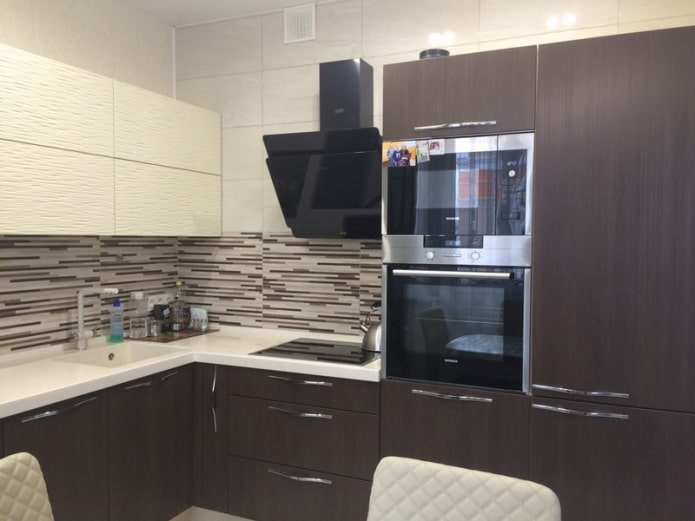
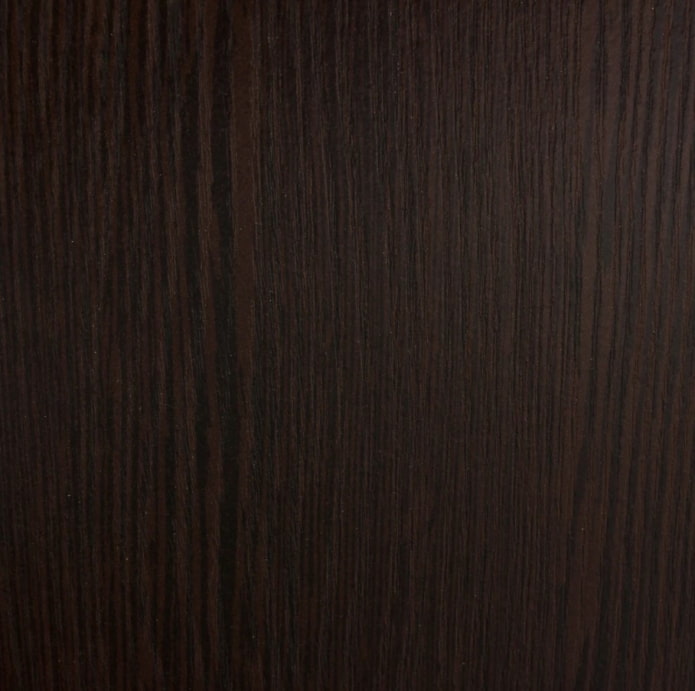

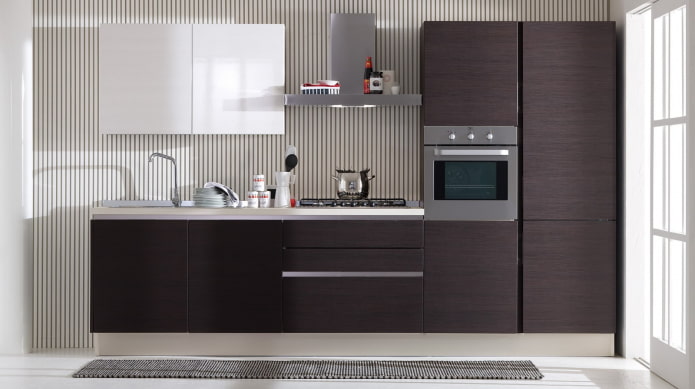
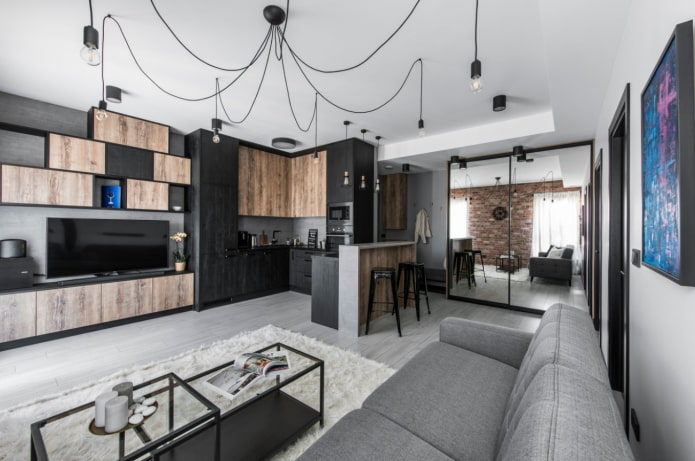
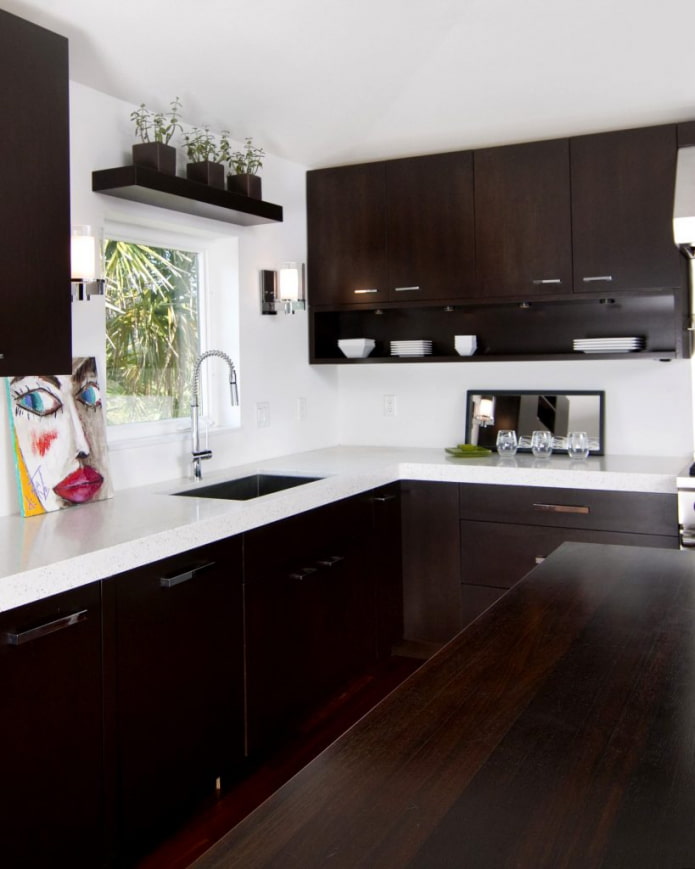
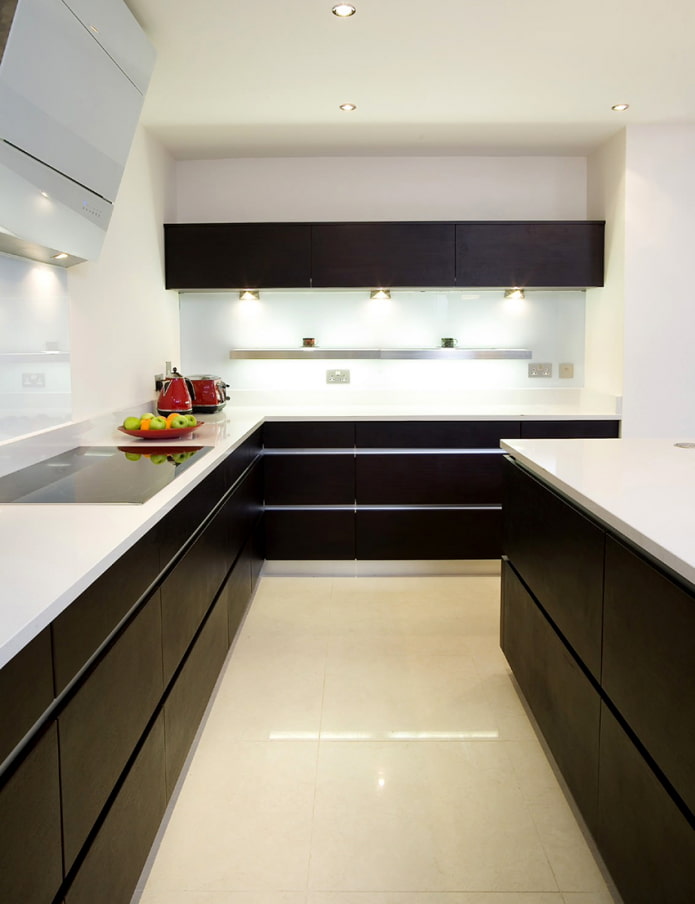

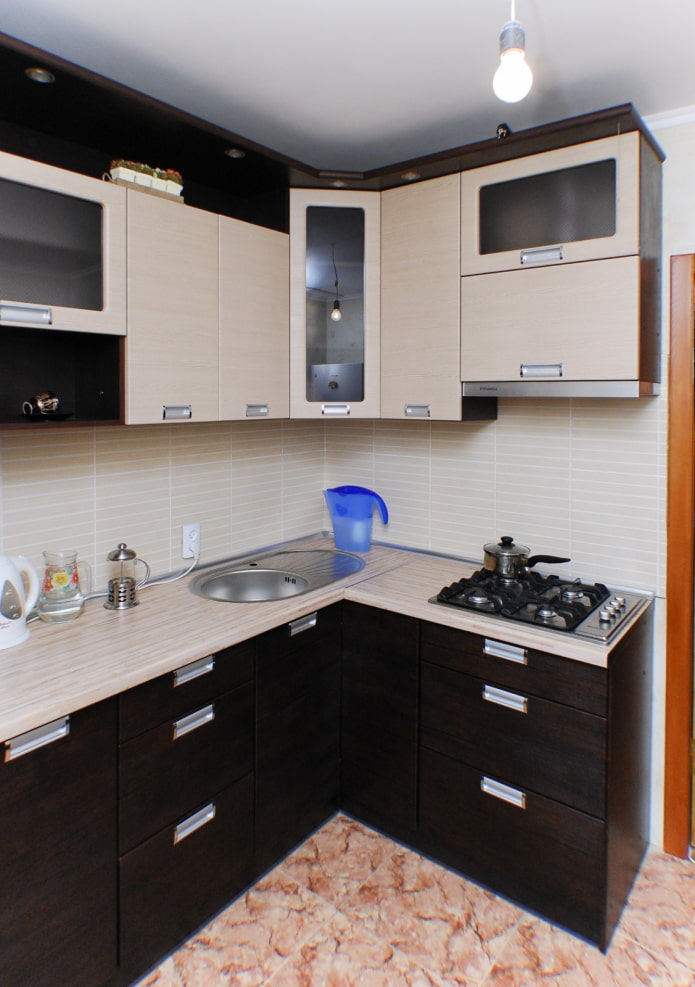
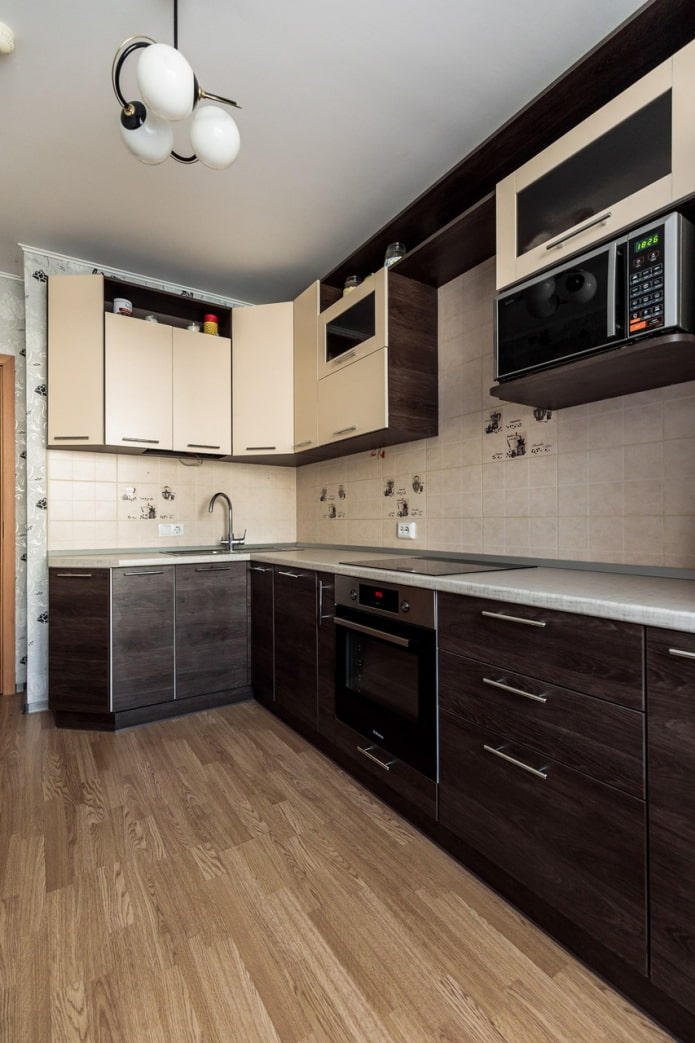
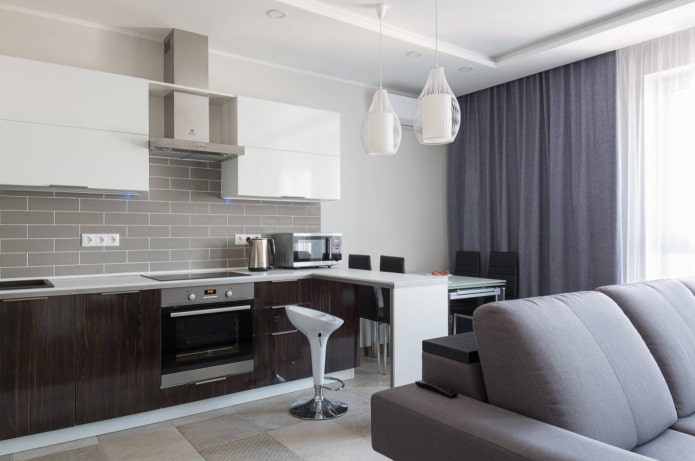

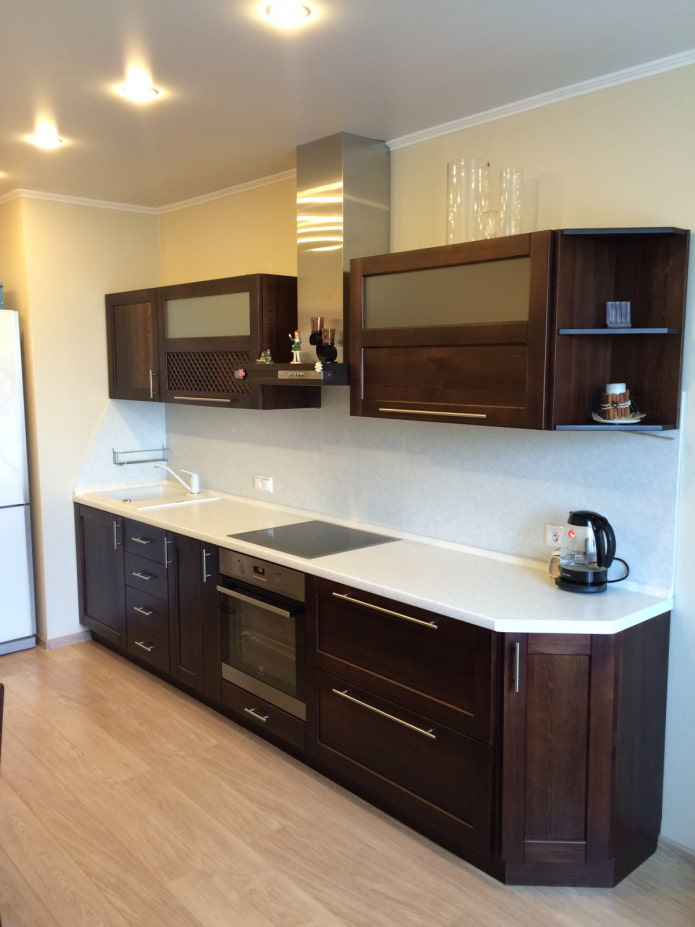
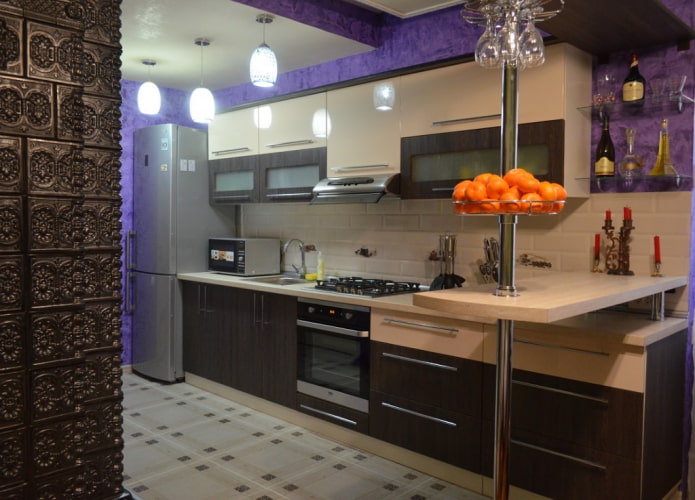
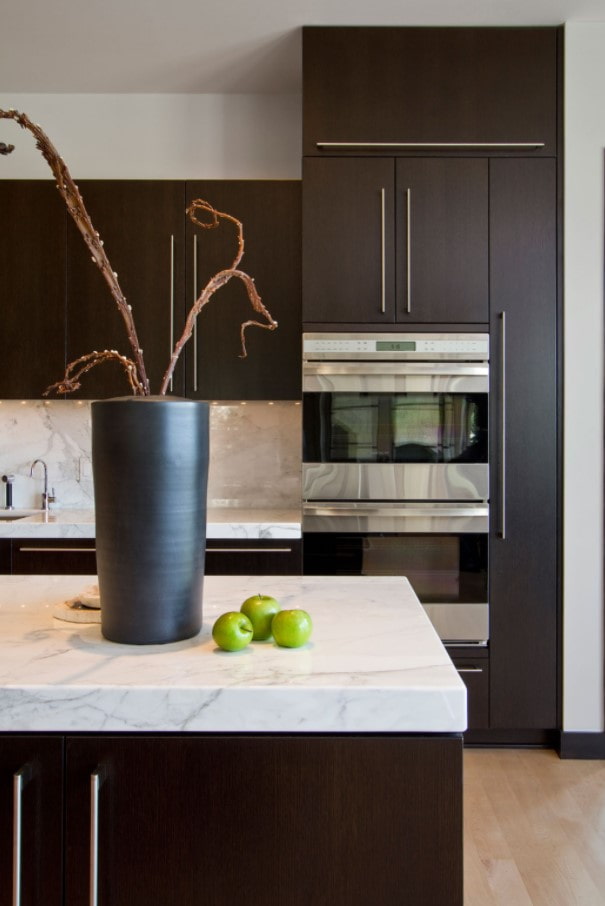

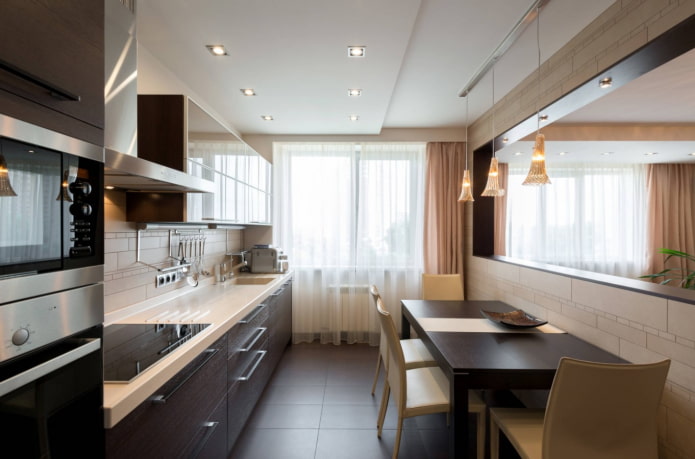
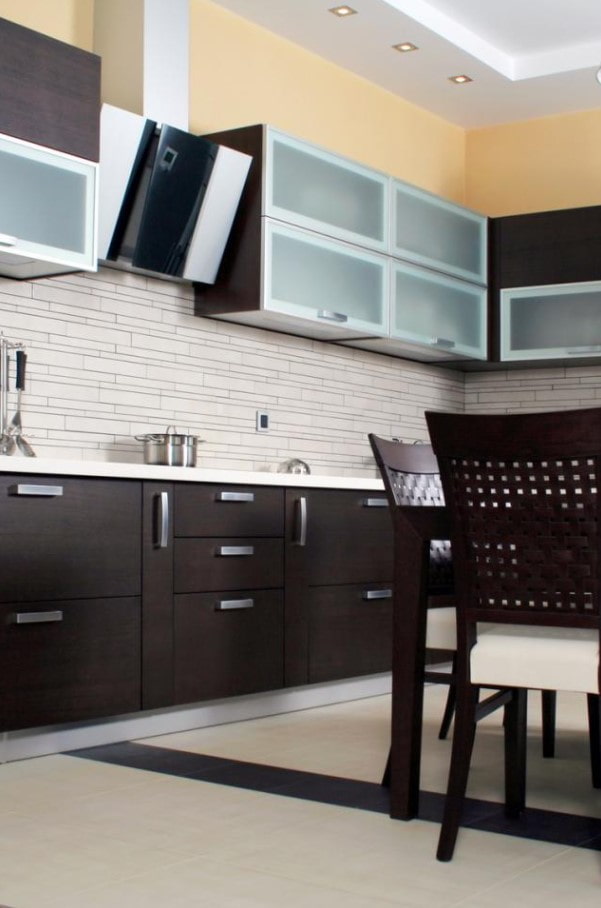

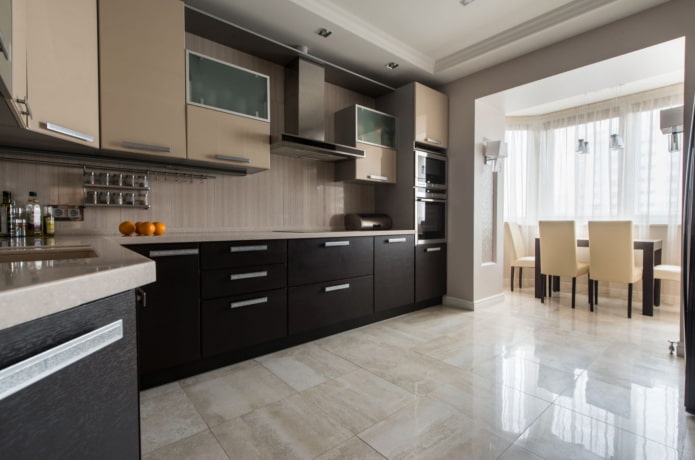
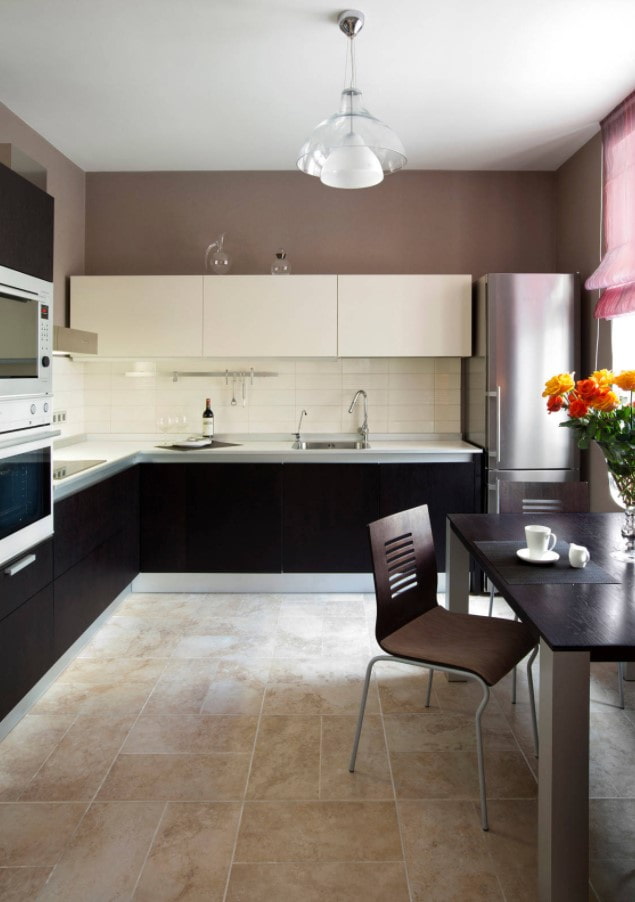

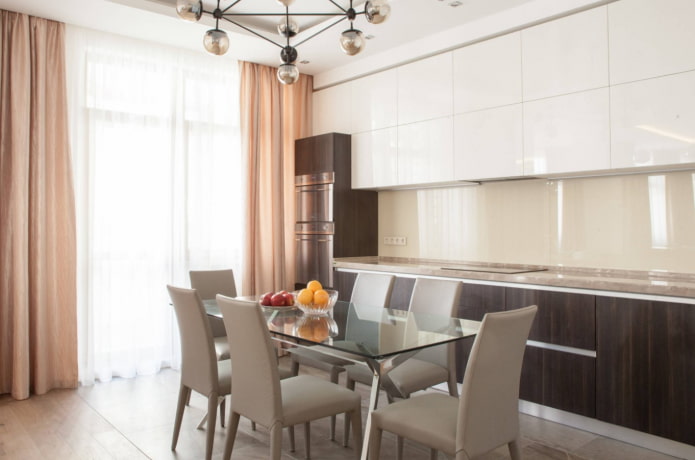
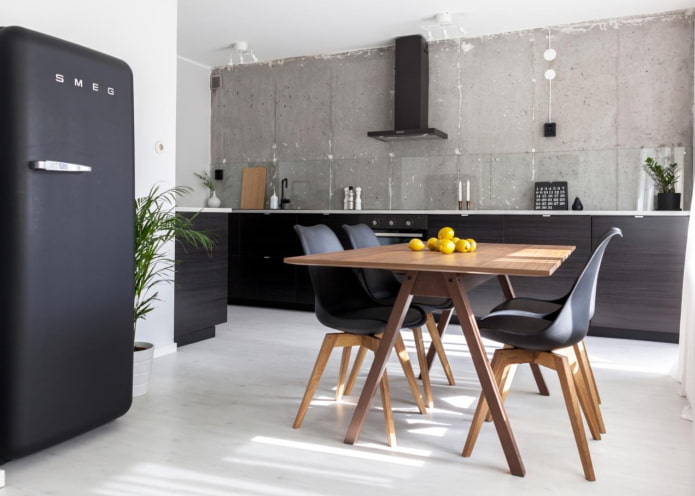
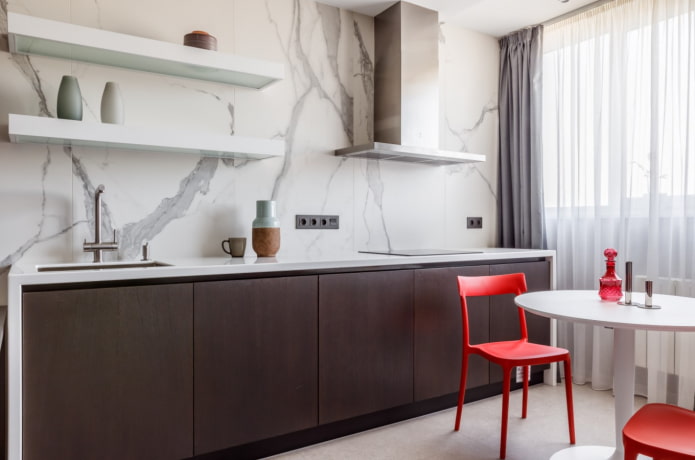

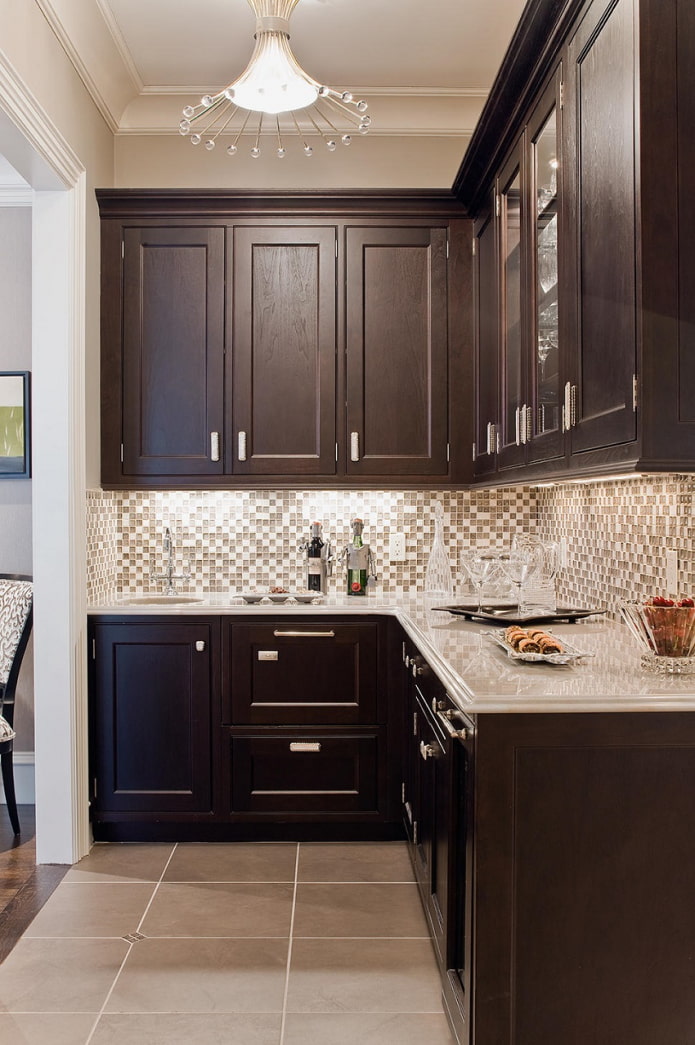
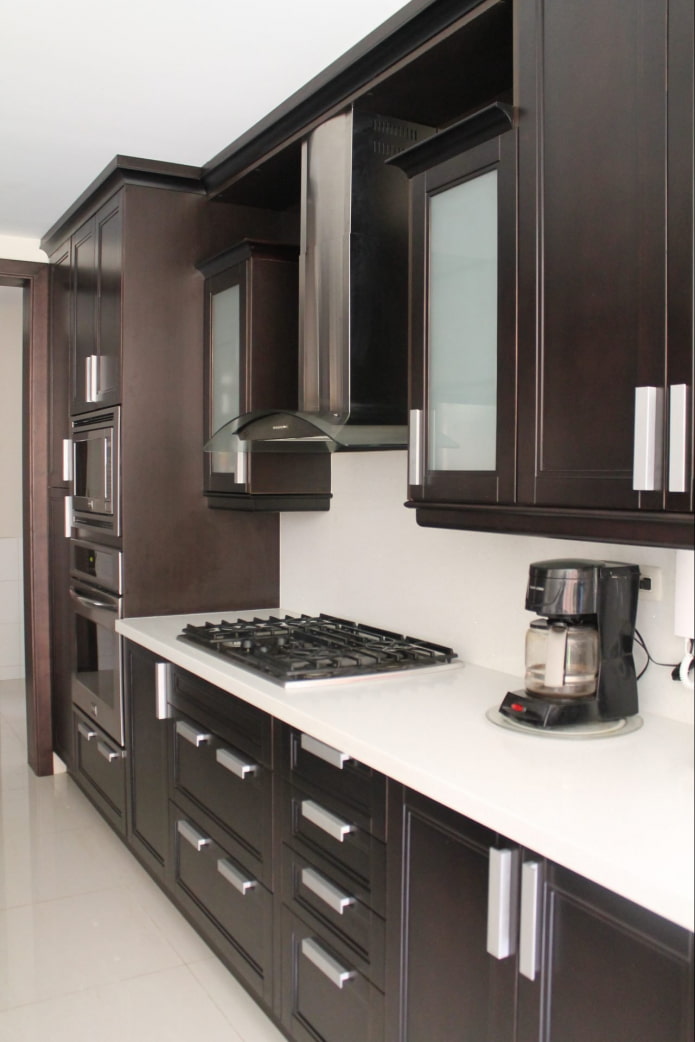
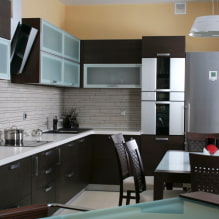
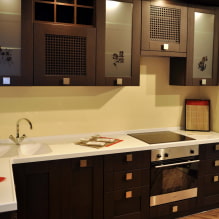
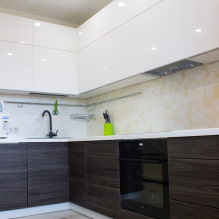
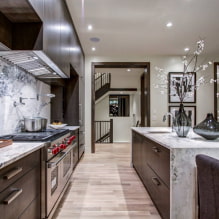
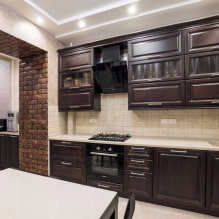
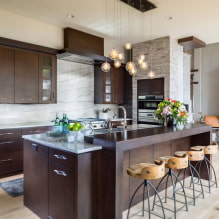
 How to choose the color of your kitchen sink?
How to choose the color of your kitchen sink? White kitchen set: features of choice, combination, 70 photos in the interior
White kitchen set: features of choice, combination, 70 photos in the interior Black set in the interior in the kitchen: design, choice of wallpaper, 90 photos
Black set in the interior in the kitchen: design, choice of wallpaper, 90 photos How to choose curtains for the kitchen and not regret it? - we understand all the nuances
How to choose curtains for the kitchen and not regret it? - we understand all the nuances Design of a white kitchen with a black countertop: 80 best ideas, photos in the interior
Design of a white kitchen with a black countertop: 80 best ideas, photos in the interior Kitchen design with green wallpaper: 55 modern photos in the interior
Kitchen design with green wallpaper: 55 modern photos in the interior